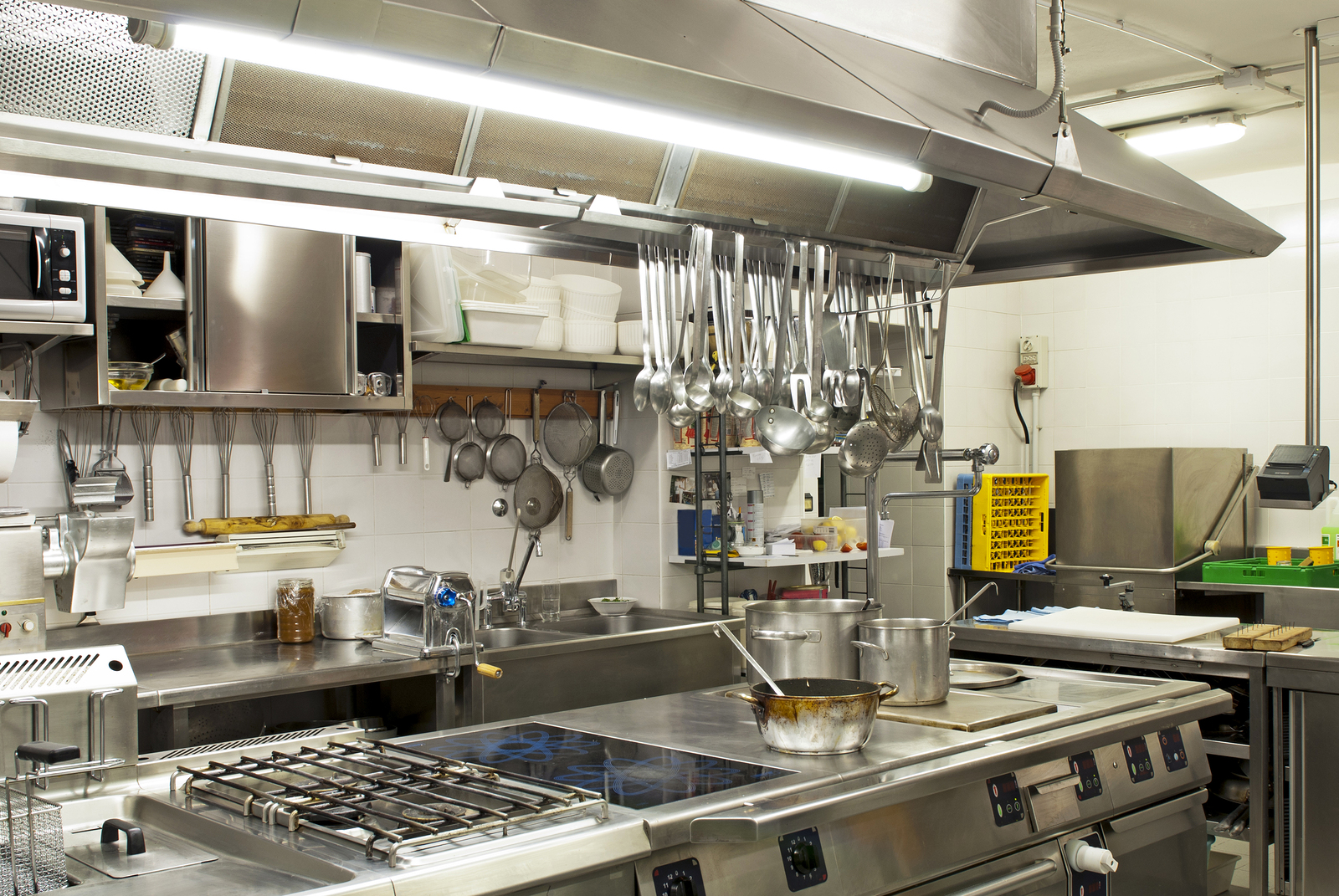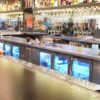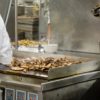Keeping a commercial kitchen clean and sanitized can be a time-consuming task. Whether you are a restaurant, hotel, hospital, corporate office or school, your kitchen is probably heavily used on a daily basis. This more than likely means that dirt and grease accumulate fast, and daily operations are hard on your vent hoods, countertops, floors and kitchen appliances.
Though it can seem like a never-ending task to keep a commercial kitchen in tip-top shape, understand that it is imperative for keeping customers and staff healthy and safe. Additionally, standards need to be maintained to avoid violating major health codes like pest infestations, fires and foodborne illnesses.
Luckily, maintaining cleanliness standards can be achieved with education, established processes and buy-in from staff. Halo recommends the following practices to keep a cleaner commercial kitchen:
- Set restaurant standards and expectations. This includes policies that require immediate attention, such as spills and potential cross-contamination issues. Empower all employees to follow standards and to encourage their teammates to do the same. Additionally, incorporate protocols into new hire training, and hold regularly-scheduled employee training meetings to go over the standards as a refresher. Consider including a timed checklist as part of the process to make sure regular tasks do not get overlooked by staff.
- Use the right cleaning products and ensure employees are well-trained in how to correctly use them. Employees should understand that different products should be used depending on the situation. Additionally, staff should be aware of the specific amount of product to be used when mixing chemical cleaners to avoid a potentially dangerous chemical reaction. Finally, always keep sprayers, mop buckets, mops and other cleaning tools in good condition.
- Follow the kitchen equipment manufacturer’s cleaning instructions, since they can vary by brand or model. Employees should know which chemical cleaners can and cannot be used on different types of equipment to avoid potential damage and injury. Additionally, always keep track of kitchen equipment warranties, when they’re due for servicing, and understand what aspects of maintenance should be left to commercial kitchen cleaning professionals.
Understand the restaurant’s practices and protocols, as well as having the correct supplies and tools available for staff will save time in the long run while reducing the chance of any potential losses. Additionally, Halo recommends incorporating a general schedule of when cleaning tasks need to be done and how often they should occur into your restaurant practices.
Annually
So that they continue to light properly, clean the pilot lights on all gas-powered kitchen equipment. This includes all ovens and grills. Additionally, if you are unsure about safely cleaning any kitchen equipment yourself, consider hiring a professional commercial kitchen cleaning company to take care of it.
It’s also imperative to have the restaurant fire suppression system and fire extinguishers professionally inspected at least once a year. Always make sure both tools are ready to use in case of an emergency.
Bi-Annually
Depending on your restaurant’s cooking operation, kitchen exhaust hoods should be professionally cleaned at least twice a year, if not more. To determine how often your restaurant should have its vent hoods cleaned, review our previous blog post.
While this job could technically be done by kitchen staff, it is highly not recommended. Besides being time consuming, it is a messy process for someone not trained as a vent hood cleaning technician. Additionally, if not done correctly, you could be putting your restaurant in even greater danger.
Routine system cleaning by a professional will keep the vent hood free of dangerous grease build up, preventing fire hazards and prolonging the life of the exhaust system components.
Monthly
Every month check behind the ovens, ranges and fryers to ensure grease is not accumulating behind the equipment. In addition to becoming more difficult to remove the longer it sits there, grease build up is a major fire hazard.
To avoid heavy frosting and potential bacteria growth, empty and clean the freezers and ice machines monthly. Also wash the kitchen ceilings and walls to remove any food particles and wipe down pantries or dry storage spaces to reduce the chances of attracting pests.
To ensure food safety standards continue to be met, calibrate any free-standing ovens and the freezer thermometers.
Finally, make sure the kitchen’s first aid kit is stocked with bandages and supplies.
Weekly
Once a week, empty, wash and sanitize heavily-used kitchen equipment including, walk-in freezers and refrigerators, the faucet and sink areas, and ovens. Additionally, deep clean the inside and outside of the oven to eliminate flavor or burnt residue from previous meals leaching into new dishes. Finally, oil the cast iron skillets once a week to prolong their longevity. Never wash iron cookware like regular pots and pans because they will rust.
Daily
At the start of the day shift, replace the foil linings on the range, flattop and grill. This will help reduce the amount of run-off grease and food particle build-up. Disinfect prep surfaces and clean the inside and all around any oven ranges, flattops, grills and fryers. Finally, floors should be mopped daily, and walls, trash cans and surrounding areas of the kitchen should be wiped down and disinfected.
During the shift, ensure that the kitchen staff is switching cutting boards and wiping down the line or prep areas, slicers and knives to reduce the chances of cross-contamination. Additionally, the grill should be brushed in between cooking fish, red meat and poultry to avoid uncooked food particles from contaminating the next dish. Finally, change out the buckets of cleaning solutions and cleaning rags throughout the shift, and empty the trash cans as needed.
Instill in your kitchen staff the practice of leaving a clean kitchen for the next shift. At the end of each shift cover all bins in the reach-in cooler, and wash and sanitize all surfaces such as the line and prep tables, the outside of the fryers, cutting boards and the reach-in refrigerator. Wash the kitchen floor and floor mats, as well as the floors of the walk-in freezer. Finally, empty the buckets of cleaning solutions and put all used cleaning rags, chefs’ coats and kitchen aprons in the dirty laundry.
If you run a kitchen operation, talk to Halo about setting up a practical cleaning schedule as well as the best practices and methods for keeping a clean kitchen. A good commercial cleaning and maintenance company has the experience needed to keep your kitchen and staff safe and your restaurant running smoothly.




